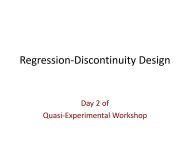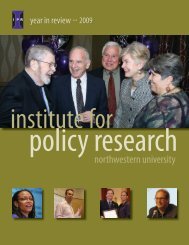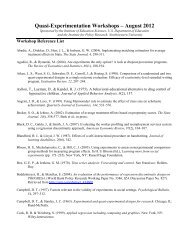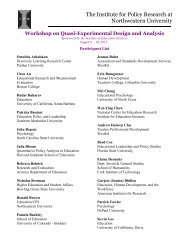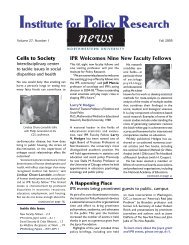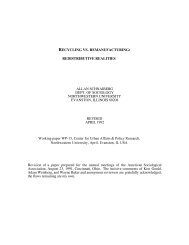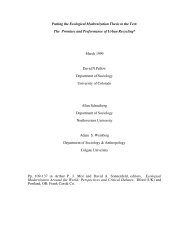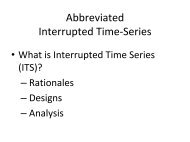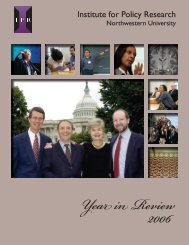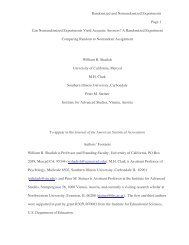IPR - Institute for Policy Research - Northwestern University
IPR - Institute for Policy Research - Northwestern University
IPR - Institute for Policy Research - Northwestern University
You also want an ePaper? Increase the reach of your titles
YUMPU automatically turns print PDFs into web optimized ePapers that Google loves.
P<br />
hilanthropy and<br />
Nonprofit Organizations<br />
The rapidly growing and evolving nonprofit sector is prominent in major service industries such<br />
as hospitals, nursing homes, higher education, and museums—often competing with <strong>for</strong>-profit<br />
and government organizations but also often collaborating with them. These interactions among<br />
institutional <strong>for</strong>ms in mixed industries are a key research focus of this program and its chair,<br />
economist Burton Weisbrod. Faculty in this area examine:<br />
• per<strong>for</strong>mance measures of both nonprofit and public service organizations<br />
• accountability in the nonprofit and public sectors<br />
• comparative behavior among different <strong>for</strong>ms of institutions<br />
• healthcare costs and competition<br />
Overview of Activities<br />
< Per<strong>for</strong>mance Measurement of Nonprofits<br />
Fundamental to problem solving <strong>for</strong> any firm, be it<br />
nonprofit, public, or <strong>for</strong>-profit, is how to empirically<br />
measure “per<strong>for</strong>mance” or “outcomes” to enhance<br />
per<strong>for</strong>mance. Yet to gauge nonprofit and public services,<br />
such as hospitals, museums, schools, or the police, by<br />
a private profitability metric is an exceedingly complex<br />
undertaking. Such a gauge does not adequately reflect<br />
their true societal contributions and thus misses key<br />
aspects of their per<strong>for</strong>mance. Against this backdrop,<br />
economist Burton Weisbrod heads a unique interdisciplinary<br />
group exploring how to gauge and improve<br />
per<strong>for</strong>mance measures in the public and nonprofit<br />
sectors and how to translate such measures into effective<br />
and efficient reward systems <strong>for</strong> the persons involved,<br />
including teachers, police, and hospital administrators.<br />
Weisbrod, John Evans Professor of Economics, organizes<br />
the <strong>IPR</strong> Seminar Series on Per<strong>for</strong>mance<br />
Measurement around the core belief that the challenges<br />
of measuring per<strong>for</strong>mance and establishing rewards are<br />
the same regardless of the area of application. In addition<br />
to speakers from universities and organizations locally<br />
and around the United States, the series welcomed<br />
a multidisciplinary line-up of <strong>Northwestern</strong> faculty.<br />
The second year kicked off with the Spencer Foundation’s<br />
chief financial officer, Mary Cahillane, who<br />
reviewed the foundation’s ef<strong>for</strong>ts to measure the success<br />
of its grant-making activities. Field Museum program<br />
director Elizabeth Babcock addressed the challenges of<br />
measuring the success of education and scientific outreach<br />
programs at a nonprofit natural history museum.<br />
Chair<br />
Burton Weisbrod, Economics<br />
Weisbrod heads a unique interdisciplinary group that explores how<br />
to gauge and improve per<strong>for</strong>mance measures <strong>for</strong> nonprofit and<br />
public sector organizations.<br />
21



